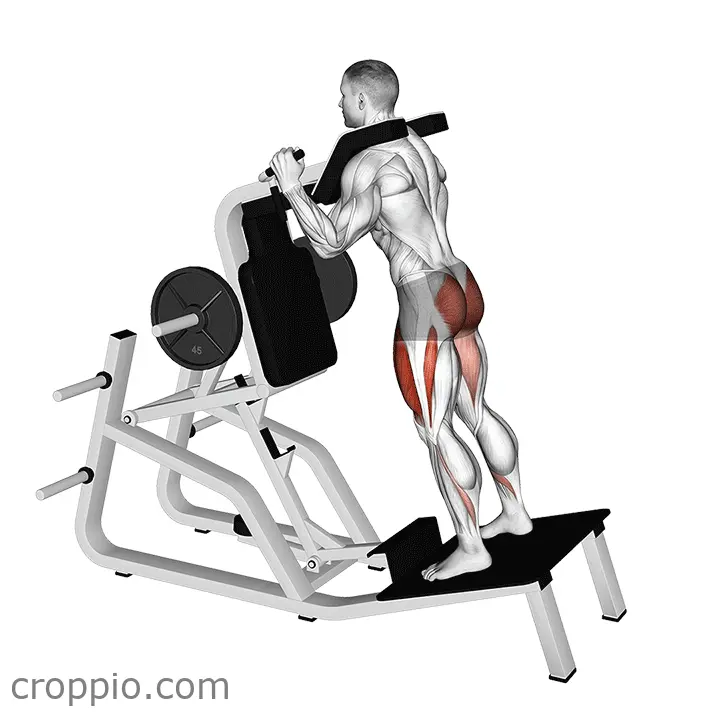V Squat

Muscles Involved
The V Squat is a compound movement that primarily targets the quadriceps, glutes, and hamstrings. The unique angle of the squat focuses on strengthening the entire lower body while promoting balance and stability. The primary muscles involved include:
- Quadriceps: The muscles at the front of the thigh that are heavily engaged to extend the knee as you rise from the squat position.
- Gluteus Maximus: The largest muscle in the glute family, crucial for hip extension and helping to maintain a stable posture.
- Hamstrings: Located at the back of the thigh, they assist in bending the knee and extending the hip joint.
Additionally, secondary muscles such as the calves and core engage to provide stabilization throughout the movement, enhancing overall strength and posture.
Top Mistakes
- Incorrect Foot Placement: Positioning the feet too far or too close can lead to added strain on the knees and reduced effectiveness.
- Allowing the Knees to Collapse: This can cause injury. Ensure that your knees track over your toes during the squat.
- Incomplete Squatting Motion: Failing to lower yourself adequately could lead to inadequate muscle activation and reduced benefits.
- Round Back Posture: Maintaining a flat back is crucial to prevent injury. A rounded back increases the risk of strain.
Execution Tips
To perform the V Squat effectively, follow these tips for optimal technique:
- Foot Position: Begin with your feet shoulder-width apart, toes pointed slightly outward. This will help you maintain balance.
- Engage Your Core: Keep your abdominal muscles tight throughout the movement to protect your lower back.
- Lower to Parallel: As you squat, aim to lower your hips until your thighs are parallel to the ground. This ensures maximum muscle engagement.
- Use a Mirror: If possible, practice in front of a mirror to monitor your form and prevent common errors.
Workouts
The V Squat can be seamlessly integrated into your workout routine. Aim for 3 to 4 sets of 8 to 12 repetitions, depending on your fitness level. To enhance your lower body workout, consider pairing the V Squat with:
- Deadlifts for overall posterior chain development.
- Walking lunges to enhance unilateral strength.
- Leg presses or calf raises to target complementary muscles.
Conclusion
Incorporating the V Squat into your lower body routine can lead to increased muscle strength, improved core stability, and enhanced athletic performance. This dynamic exercise not only strengthens the legs but also helps improve balance and coordination, making it a valuable addition to any fitness program.



